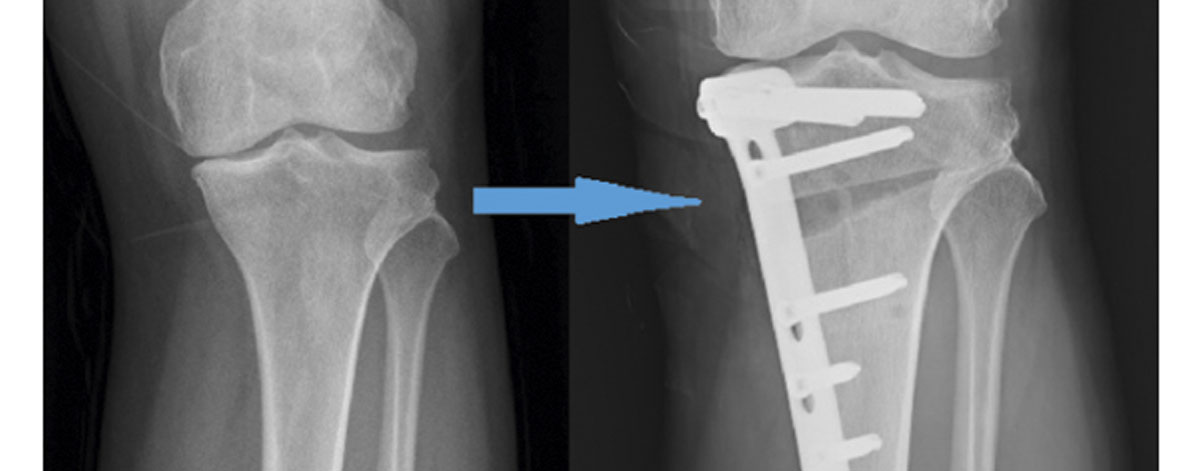High Tibial Osteotomy
High Tibial Osteotomy (HTO) is a surgical procedure performed to treat knee conditions, typically when there is early-stage osteoarthritis affecting only one side of the knee joint. The goal of HTO is to realign the knee joint by making a controlled cut (osteotomy) in the upper part of the tibia (shinbone) to shift the weight-bearing load from the damaged part of the knee to the healthier, less affected part. By redistributing the forces on the joint, HTO can relieve pain and slow down the progression of osteoarthritis on the affected side of the knee.
Here's an overview of the HTO procedure:
- Patient Evaluation: Before recommending HTO, the orthopedic surgeon evaluates the patient's knee condition through physical examination, imaging tests (such as X-rays and MRI), and a review of medical history. The patient must have specific criteria for a successful outcome, including having early-stage osteoarthritis affecting only one side of the knee, being relatively young and active, having stable ligaments in the knee, and having good joint function and range of motion before the surgery.
- Anesthesia: HTO is typically performed under general anesthesia, which means the patient is asleep during the procedure. Alternatively, regional anesthesia (spinal or epidural) may be used to numb the lower half of the body while the patient remains awake.
- Surgical Procedure: During the surgery, the surgeon makes an incision on the side of the knee to access the joint. A controlled cut (osteotomy) is made in the upper part of the tibia, just below the knee joint. The surgeon then carefully opens the tibia and adjusts the angle to realign the knee joint.
Do's for High Tibial Osteotomy
- Follow Pre-operative Instructions: Adhere to your surgeon's pre-operative guidelines, which may include fasting instructions, medication restrictions, and hygiene protocols.
- Prepare Your Home: Make sure your home is safe and accessible for your recovery, with clear pathways and assistive devices like crutches or a walker.
- Comply with Medications: Take prescribed medications, including pain relievers and antibiotics, as directed to manage pain and prevent infections.
- Keep the Incision Clean and Dry: Follow your surgeon's instructions on caring for the surgical incision to prevent infections and promote proper healing.
- Control Swelling and Pain: Use ice packs and elevation to control swelling, and take pain medications as prescribed to manage discomfort.
Don'ts for High Tibial Osteotomy
- Overexert Yourself: Avoid putting excessive stress on the healing knee during the early stages of recovery. Follow your physical therapist's guidelines and gradually increase activity as advised.
- Neglect Physical Therapy: Continue with your physical therapy sessions diligently to ensure a successful recovery and improve knee function.
- Ignore Signs of Infection: If you experience signs of infection, such as fever, increased redness, swelling, or drainage from the incision, contact your surgeon immediately.
- Engage in High-Impact Activities: Avoid high-impact exercises or activities that may put excessive strain on the healing knee.
- Sit for Prolonged Periods: Avoid sitting or lying in one position for too long to prevent stiffness and discomfort.

